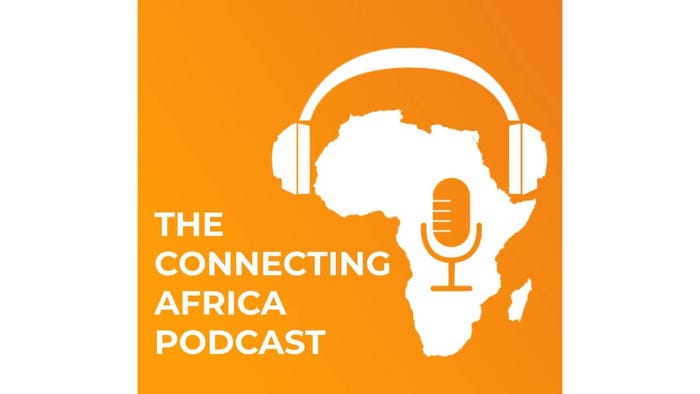SES is expanding satellite capacity over AfricaSES is expanding satellite capacity over Africa
Satellite network provider SES will add more capacity to its medium-Earth orbit (MEO) constellation in 2025 to provide increased bandwidth for African enterprises and telecom operators.
.jpg?width=1280&auto=webp&quality=95&format=jpg&disable=upscale)
Satellite telecommunications provider SES is adding capacity to its network with the aim to add more bandwidth for African clients in 2025.
The company uses both medium-Earth orbit (MEO) satellites, under its brand O3b mPOWER, and geostationary (GEO) satellites.
In December 2024, SES launched the seventh and eighth O3b mPOWER satellites for its MEO constellation, with three more satellites set to be added in 2025 and another two in 2026.
"We're adding incremental bandwidth into the O3b mPOWER network. You need six satellites to have a full global equatorial service, which covers the whole of Africa, so we already have the full coverage. But what we're doing with the latest two satellites is we're just adding more bandwidth into the network," Simon Gatty Saunt, SES VP of sales for Europe and Africa, told Connecting Africa in an interview.
"We've got another two or three launches coming up in 2025, which is just going to add more and more bandwidth to the network," he added.
SES works with a number of Tier-1 and Tier-2 mobile network operators (MNOs) in Africa – including Orange and Vodacom – and also supplies satellite services to sectors like mining and offshore energy.
"For example, in a country like Central African Republic, at the moment we've pretty much sold [all of our bandwidth] over that country to Orange, but the two new satellites will be able to provide us with more bandwidth for our second customer in the country, which is Moov Africa," he said.
Gatty Saunt said there is a rising demand for satellite services in Africa, with users of satellite Internet services projected to almost triple on the continent by 2031.
GEO vs. MEO vs. LEO
There has been a lot of fanfare over low-Earth orbit (LEO) satellite services lately with companies like Starlink and Eutelsat OneWeb making inroads in Africa.
On the other hand, Luxembourg-headquartered SES has a multi-orbit satellite approach with both GEO and MEO satellite fleets.
SES's GEO fleet has over 50 satellites which cover most of the world, delivering TV channels and data services.
"We have been operating in the medium-Earth orbit for just over ten years now. We started off with what was called O3b, and we're now in our second-generation O3b, which is called mPOWER," Gatty Saunt explained.
Connecting Africa attended the launch of the first two O3b mPOWER satellites in December 2022. Since then, six more have been sent up.
The plan for the O3b mPOWER constellation is to have 13 high-throughput and low-latency satellites along with extensive ground infrastructure.
The remaining five O3b mPOWER satellites are currently being manufactured and are scheduled for launch over the next 18 months.
_(1).jpg?width=1280&auto=webp&quality=80&disable=upscale)
Rendering of what the final O3b mPOWER MEO constellation will look like around Earth. (Source: SES)
Gatty Saunt explained that the major difference between the different types of satellite constellations comes down to latency.
"The round-trip time from the remote terminal back to a data center [on O3b mPOWER satellites] is around 120 milliseconds, whereas on a GEO link, it's somewhere around 800 milliseconds. On a Starlink [LEO satellites], you're looking at sub 100 milliseconds so we're not too far off what that system can provide," he added.
"GEO satellites are at 36,000 kilometers above Earth, and we are at 9,000 kilometers with the mPOWER satellites in the medium-Earth orbit. We kind of made the decision to go down the MEO route because you need less satellites to cover the world," he said.
LEO satellites are usually situated about 2,000 kilometers above Earth.
Another advantage of MEO satellites is that they give a bigger field of view.
"The satellites can cover a wider area than a typical LEO satellite, which works very well in the enterprise environment," Gatty Saunt explained.
"It's not a consumer product. So, for example, you haven't got a mini dish that you can put on the side of your house and use O3b mPOWER. It's very much geared around enterprise solutions across a number of different segments, including mining, telco, energy and government. Those are the main sectors we service in Africa today," he added.
_(1).jpg?width=1280&auto=webp&quality=80&disable=upscale)
O3b mPOWER ground terminals at an antenna field in Betzdorf, Luxembourg. (Source: SES)
"LEO satellites provide high-burst, best-effort data applications while our fleet of GEO and MEO satellites [is] ideal for delivering reliable and high-throughput connectivity flexibly. Together, they can connect remote and rural areas, or when natural disasters are disrupting fiber networks and connectivity restoration is needed promptly," Gatty Saunt added.
He said that through commercial arrangements with other operators, SES is integrating LEO services into its solutions to meet specific needs of cruise and government customers.
Telco services
Gatty Saunt said that MNOs across Africa use SES services as part of their mobile networks to provide backhaul capabilities, similar to fiber backhaul.
"It's a bit of a corny tagline, but we call it fiber in the sky, because it really is. We do a lot of backhaul today – anything from 30 megabits all the way up to multiple gigabits of bandwidth," he said.
Satellite connectivity solutions are useful for landlocked countries, where connectivity via fiber can be difficult due to geographically challenged terrains.
The SES group works closely with Orange across the African continent and provides satellite connectivity for eight of its African operations.
"In Central African Republic (CAR) today, we do a combination of our GEO satellites for some of the rural and ultra-rural sites. Then we have our mPOWER, which is used for the international links back to France, and we land that in Portugal, and then it's routed to Telehouse Paris [data center]," Gatty Saunt said.
The services are also active across CAR for Orange's recently launched 4G network.
.jpg?width=700&auto=webp&quality=80&disable=upscale)
Simon Gatty Saunt, SES VP of sales for Europe and Africa. (Source: SES)
Gatty Saunt said the company uses a software-defined wide area network (SD-WAN) solution that combines GEO and the MEO across a common platform, which plugs straight into Orange's terrestrial mobile network in CAR.
"We've also got a partnership with Vodacom in the Democratic Republic of Congo (DRC), and that is through a systems integrator called Gilat, based out of Israel. We are currently building an mPOWER gateway in Kinshasa for Vodacom, which is going to give them multiple gigabits of bandwidth used for mobile backhaul in four major cities," he said.
He said SES is doing similar projects in Liberia and Côte d'Ivoire for Orange.
"Orange in Senegal is a partner of ours. So, we actually have an SES gateway in Senegal where we can uplink our other enterprise customers across Africa, out of the Orange facility there," he added.
Mining and offshore energy
Satellite connectivity is also useful for offshore energy rigs and mining, noted Gatty Saunt.
"We've got a number of mPOWER sites offshore of Angola, Nigeria, Ghana, Senegal, all around that kind of oil belt. The reason why the energy companies like our service is because we offer a very high SLA (service-level agreement), and we can offer very high throughput into the sites, more so than you get on a normal GEO satellite," he said.
SES works with mining companies in eight countries, mainly across the equatorial belt of Africa.
One example is a five-year collaboration with Kamoa Copper in the DRC, supporting its mining operations' digital shift with connectivity in remote sites.


.jpg?width=700&auto=webp&quality=80&disable=upscale)
_(1)_(1).jpg?width=700&auto=webp&quality=80&disable=upscale)
_(1).jpg?width=700&auto=webp&quality=80&disable=upscale)
.jpg?width=700&auto=webp&quality=80&disable=upscale)
.jpg?width=700&auto=webp&quality=80&disable=upscale)
.jpg?width=700&auto=webp&quality=80&disable=upscale)
_(1).jpg?width=700&auto=webp&quality=80&disable=upscale)
.jpg?width=700&auto=webp&quality=80&disable=upscale)
.jpg?width=800&auto=webp&quality=80&disable=upscale)

.jpg?width=700&auto=webp&quality=80&disable=upscale)